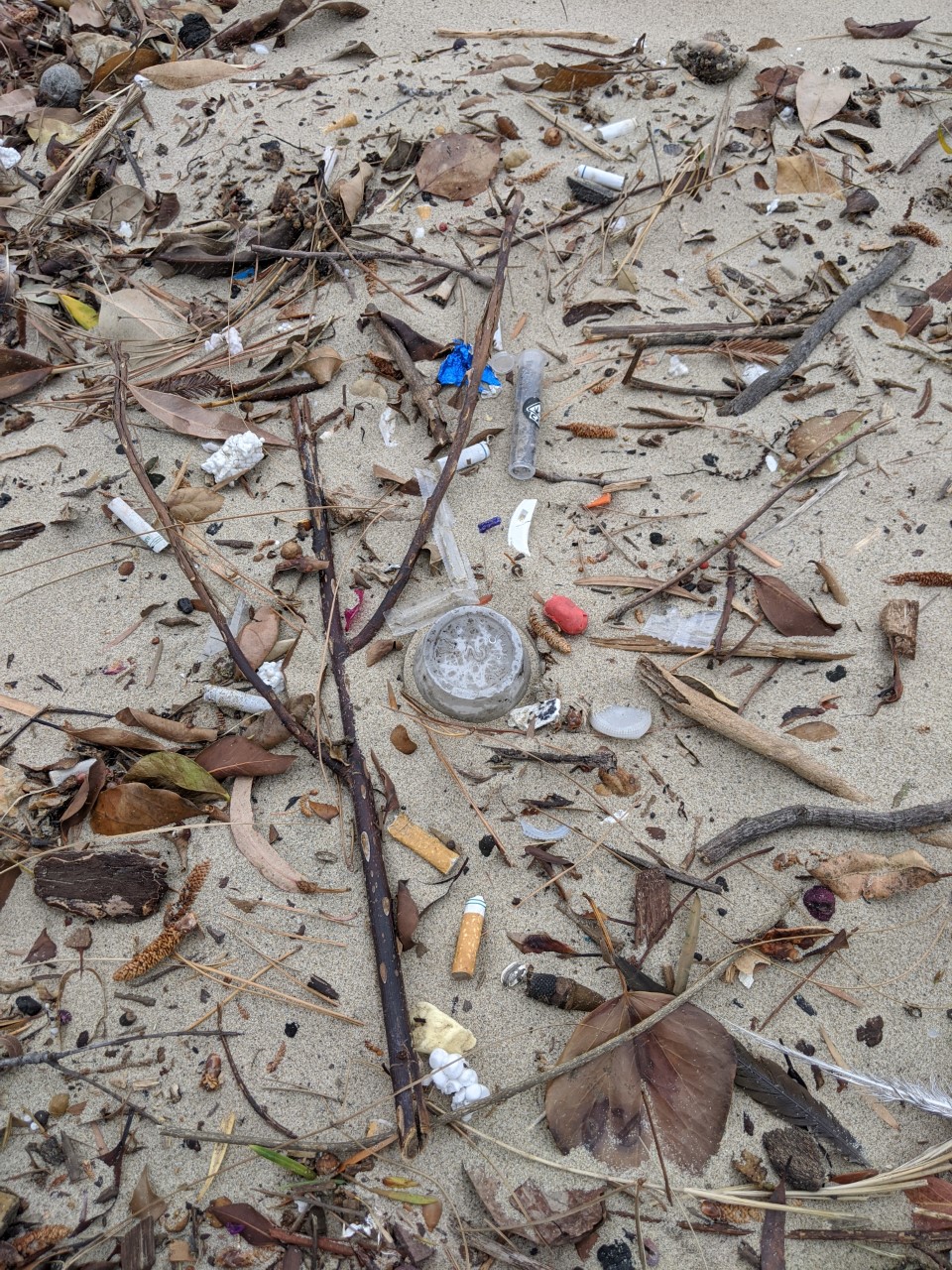How To Do A Beach Cleanup (While Practicing Physical Distancing)

See Shelley Luce, Heal the Bay CEO, do a beach cleanup with her family in between rainstorms on Monday, March 16, 2020.
Are you practicing physical distancing during the COVID-19 response? Yes? Good! If you are looking for something productive to do, to get out of the house while still protecting your wellbeing and the health of others, we recommend doing a cleanup. We believe it is healthy to be outside volunteering, just not together in large groups at this time. So get ready for a dose of fresh air, fill up your reusable water bottle, and follow these instructions on how to do a cleanup.
It’s important to do cleanups, especially now, because the much-needed #LArain we are experiencing has created a surge in runoff and pollution in our neighborhoods, parks and beaches. The majority of waste that ends up in the environment is plastic, which harms wildlife, natural habitats, and public health. The good news: we can all clean up this trash at any time!
Nearly 80 percent of pollution in our marine environment comes from the land. Runoff from more than 200,000 storm drains on L.A. streets flows out to the Pacific Ocean causing the majority of local ocean pollution. By removing tons of pollution from neighborhoods and parks, in addition to beaches and waterways, cleanup participants reduce blight, protect animals, and boost the regional economy.
Here are helpful instructions on how to do a cleanup AND contribute to Heal the Bay’s ever-growing database of over 4,000,000 pieces of trash and debris from the last couple of decades in Los Angeles County, California. We use this trashy data to help inform public policy decision-making and aid businesses and organizations in adopting best practices.
Cleanup Instructions
1. Watch our Cleanup Safety Video or read our Cleanup Safety Talk (we follow this brief outline of safety tips and related topics to give talks before our group cleanups, not all of it will apply to your individual cleanup). This required viewing will help you determine what to do if you find a sharp needle (Don’t pick it up! Report it) and if lightning strikes (head inside immediately!) or how to avoid sneaker waves if you’re doing your cleanup at the beach.
2. Download our Cleanup Data Card (print it and bring the Data Card with you to your cleanup along with a pencil) or track the trash you collect with either the Marine Debris Tracker App.
3. Grab a reusable bucket and a pair of gardening gloves (or at least one glove for the hand you use to pick up trash) and head outside. You can do a cleanup for 15 minutes or an hour – whatever your preference is, please always prioritize safety first!
4. Don’t forget to post your cleanup pics and results on social media using the hashtag #healthebay and tagging us @healthebay. We can’t wait to see your trashy finds and give you well-deserved kudos for volunteering to protect the outdoor places we all cherish.
Learning Resources
Now that you’ve done a cleanup, here are some resources to learn more about the pollution we commonly find at cleanups, and how to prevent it from winding up there.
- Dive into the facts about plastic pollution and go through a historical timeline (UN Environment).
- View ten tips on how to reduce plastic with your family (National Geographic Kids).
- Learn about the top trash items found by volunteers at cleanups worldwide in the International Coastal Cleanup Report 2019 (Ocean Conservancy).
- See how the proposed California Circular Economy and Pollution Reduction Act aims for a 75% reduction of all single-use plastic packaging and products sold in California by 2030, with the rest being effectively recyclable or compostable (Change.org x Heal the Bay).
- Be a part of a thriving culture of reuse and refill in Los Angeles to reduce waste from single-use plastic products and packaging (Reusable LA).


